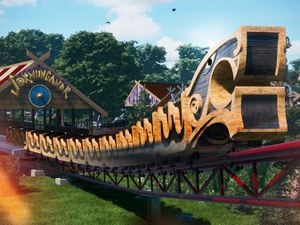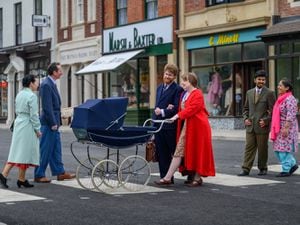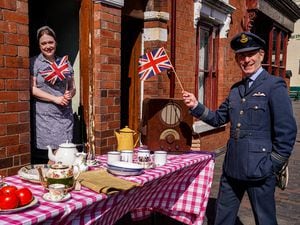New chapter as historic library dismantled for journey to Black Country Living Museum
Work is forging ahead on dismantling an historic Dudley library brick by brick before it is rebuilt at the Black Country Living Museum.
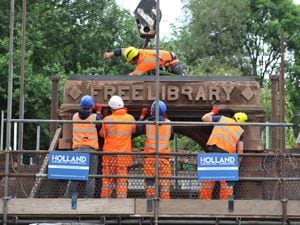
During the latest phase of the Woodside Library project the stone ‘Free Library’ sign has been carefully lifted from the old site with the help of a crane ready to be taken to the museum about three miles away in Tipton Road.
The hefty stone weighed around 1.6 tons – including the weight of the lifting equipment – due to there being “a lot of moisture” inside of it which weighed it down.
The library will be the centrepiece of the museum’s new 1940s-1960s Black Country town, which will see 22 new buildings added to the site.
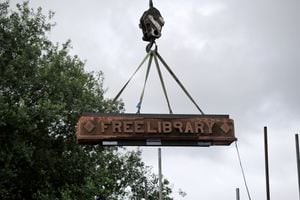
West McGowan, recorder at Holland Contracting and Conservation which is carrying out the work, said: “The work is going ahead nicely and we’ve actually found some old cigarette packets from either the 30s or the 40s; they’ve gone to the museum now and hopefully they can use them as props.
“The work is very intricate in some places – we’ve got a challenging bit in two weeks – with the arch. [The work] has got another few weeks to go, about three more weeks-ish depending on the weather.”
Other buildings which will join the Tipton Road attraction’s exhibition include the old Stanton’s Music Shop from Castle Street, Dudley, and a recreation of the Elephant & Castle pub, which once dominated the corner of Stafford Street and Cannock Road in Wolverhampton.
Black Country Living Museum chief executive Andrew Lovett said in May this year the museum was “proud” to give Woodside Library a new home as part of the project.
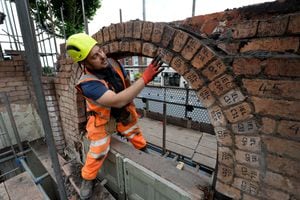
He added: “The library will be set in the 1960s when it was an important community hub – a time when its well-known children’s library was to the fore and when the dances held on its first-floor room were some of the most notable occasions in Dudley’s social calendar. We’re aiming to depict a genuine slice of Black Country life from the period with this much-loved building.”
The library opened in 1894 after the Earl of Dudley offered the land for the library and Woodside Park in 1890 – land which was previously part of the Earl’s large Woodside Colliery. On the day of the opening ceremony, the Earl and Countess of Dudley were escorted by the Worcestershire Hussars with a procession by carriage from Dudley Town Hall, to Netherton, and on to Woodside.
Woodside Library featured a reading room and lending library on the ground floor, and recreation and retiring rooms on the first. The upstairs rooms were also used for a variety of local clubs and, most famously, dances led by local compere Horace Robinson.
After the Second World War, the library service began to expand, with Woodside incorporating both a children’s library and gramophone record library. It was renovated in the early 1970s to brighten it up and continued in use until 2008.
Dudley councillor Ian Kettle said: “There is fantastic regeneration work happening all over Dudley and the latest developments at the Black Country Living Museum are hugely exciting.
“Woodside is an important building with lots of history behind it and I am glad it is being kept in the borough for future generations to see.”



